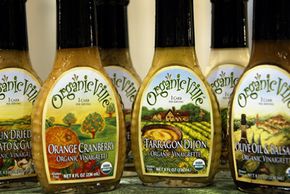Organic foods and other products are popping up everywhere. A tour through an average grocery store will reveal wide selections of fruits, vegetables, grains, dairy, meats and seafood that are organic. Specialty shops might yield organic clothing and cosmetics. Organic products are fairly easy to spot. Usually, there is a United States Department of Agriculture (USDA) organic seal on the label or some form of copy boasting that the product is 100 percent organic or made with organic ingredients. But what's behind the label? How do products become certified organic?
In 2002, the USDA established standards for organic products. Meeting these standards is the core of the organic certification process -- a process producers must complete before labeling a product as organic. The standards apply regardless of whether the product is from the United States or another country. USDA-approved state, non-profit and private agencies called certifiers enforce standards.
Advertisement
The USDA's standards require that farmers produce organic foods with methods that maximize soil health, conserve water and reduce air pollution. Certified organic farms cannot use synthetic fertilizers, pesticides, or hormones.
But farmers aren't the only ones who must comply with organic standards. Companies that process and handle organic foods and products must meet government rules to become certified. This makes the entire process from planting, to processing, to delivering certified organic. Restaurants and supermarkets that serve and sell organic products are not required to have organic certification.
In this article, we'll explore the organic certification process, organic labels and the associated costs and criticisms.
Advertisement






